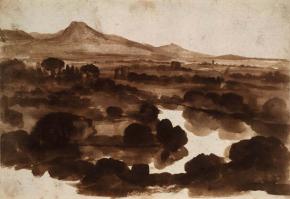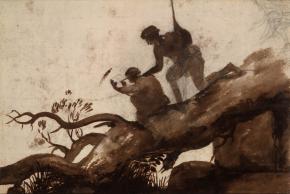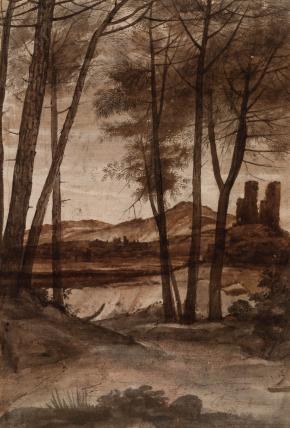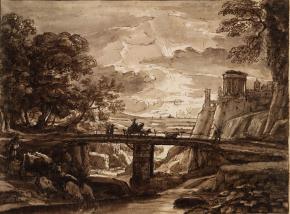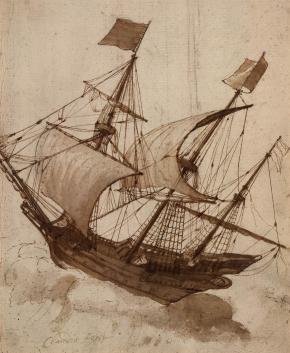The Light of the Campagna

Press information
The exhibition The Light of the Campagna presents drawings by one of the greatest European landscape artists: Claude Gellée, known as Claude Lorrain (1604/05–1682). This is the first large-scale show in Germany to be devoted explicitly to Lorrain’s drawings. Some 1,200 drawings have been identified to date as belonging to the multifaceted oeuvre of the French painter and draughtsman, who spent nearly his entire life in Rome. The exhibition features 90 remarkable pen and brush drawings from the Department of Prints and Drawings at the British Museum in London. The carefully selected works come for the most part from the prestigious collections of Sir Richard Payne Knight and the Dukes of Devonshire.
Claude Lorrain developed over the course of his career an idealised image of the Italian landscape and the southern light that suffuses it – a vision that would leave its mark on international landscape painting until the mid-19th century and also inform the work of artists such as Claude-Joseph Vernet and William Turner. Lorrain’s many mythological and historical figures from ancient Rome populated atmospheric and light-filled compositions that have been a fixed reference point that every subsequent generation of artists has strived to emulate.
The exhibition presents a selection of distinguished drawings in a wide variety of techniques. Many were freely executed from nature during sketching expeditions in the Roman Campagna and around Tivoli. These surprisingly modern-looking, free-form landscape studies exude a freshness and spontaneity far ahead of their time. Claude Lorrain was one of the pioneers of drawing in the countryside. His drawings compellingly display how the artist was able to capture nature and the phenomena of the outdoor light extremely accurately with pen and brush and then translate them into highly picturesque scenes on paper.
On view alongside these nature scenes are studies for paintings as well as a concise selection from Claude’s famous Liber Veritatis, an album of masterful drawings the artist made to record the compositions of his finished paintings, resulting in artworks in their own right.
To enable viewers to compare Lorrain’s idealised painted landscapes with his wonderful drawings of his own work, the Hamburg painting Dido and Aeneas in Carthage from 1675/76 will be shown side-by-side with the corresponding drawing from the Liber Veritatis.
With the kind support of Freunde der Kunsthalle e.V., the Hubertus Wald Stiftung and the Tavolozza Foundation.
